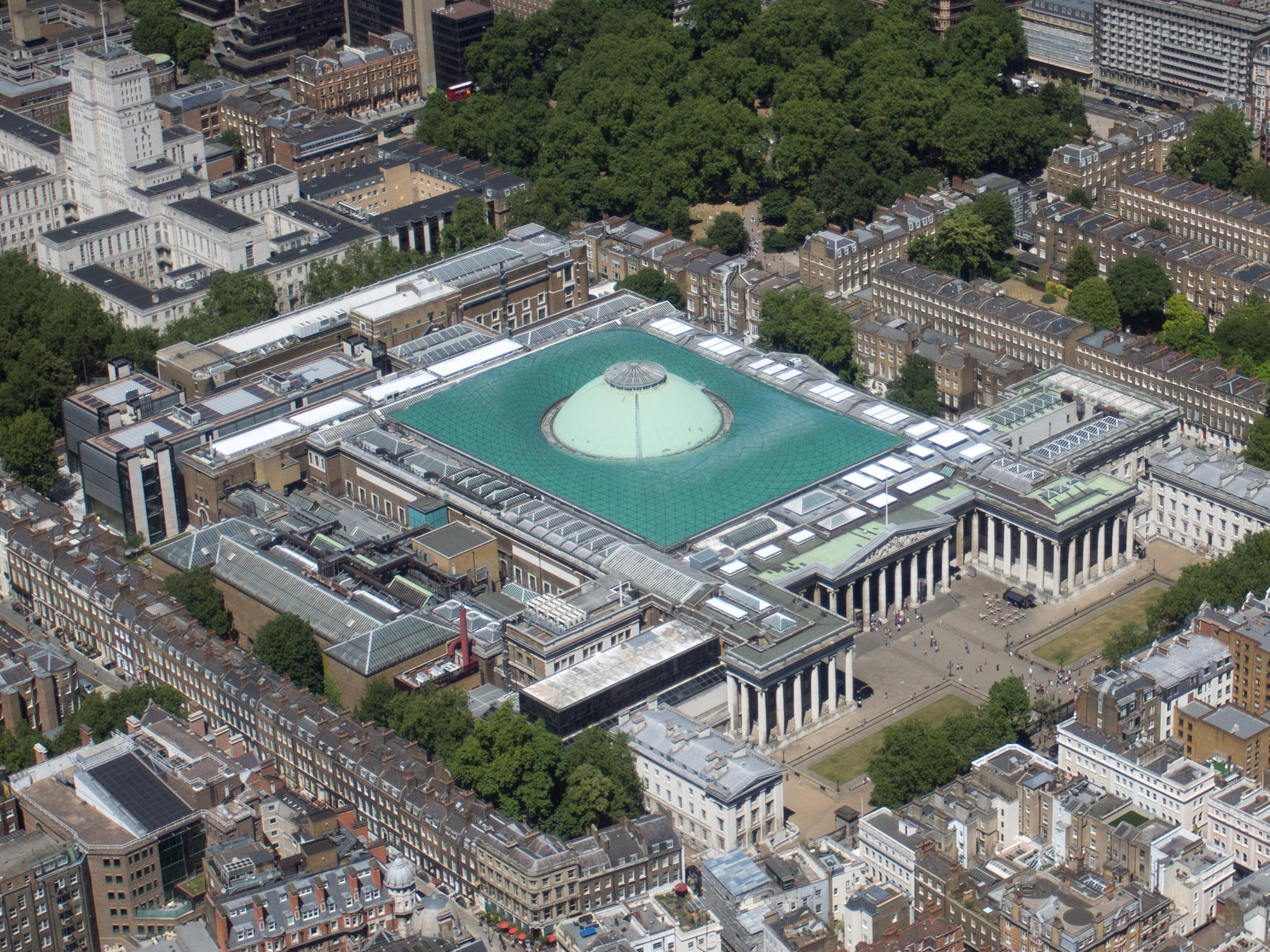Related Subjects
British Museum
 The British Museum is a public museum dedicated to human history, art and culture located in the Bloomsbury area of London. Its permanent collection of eight million works is the largest in the world. It documents the story of human culture from its beginnings to the present. Established in 1753, the British Museum was the first public national museum.
The British Museum is a public museum dedicated to human history, art and culture located in the Bloomsbury area of London. Its permanent collection of eight million works is the largest in the world. It documents the story of human culture from its beginnings to the present. Established in 1753, the British Museum was the first public national museum.In 2023, the museum received 5,820,860 visitors, an increase of 42% from 2022. It was the most popular attraction in the United Kingdom according to the Association of Leading Visitor Attractions (ALVA).
At its beginning, the museum was largely based on the collections of the Anglo-Irish physician and scientist Sir Hans Sloane. It opened to the public in 1759, in Montagu House, on the site of the current building. The museum's expansion over the following 250 years was largely a result of British colonisation and resulted in the creation of several branch institutions, or independent spin-offs, the first being the Natural History Museum in 1881. Some of its best-known acquisitions, such as the Greek Elgin Marbles and the Egyptian Rosetta Stone, are subject to long-term disputes and repatriation claims.
In 1973, the British Library Act 1972 detached the library department from the British Museum, but it continued to host the now separated British Library in the same Reading Room and building as the museum until 1997. The museum is a non-departmental public body sponsored by the Department for Culture, Media and Sport. Like all UK national museums, it charges no admission fee except for loan exhibitions. Provided by Wikipedia
Ramesses VI (KV9) Sarcophagus Conservation
:
From the destruction of the sarcophagus in antiquity until its restoration beginning in the summer of 2001, the hundreds of fragments making up Ramesses VI’s inner sarcophagus remained scattered around the burial chamber of KV 9. Over the millennia they had been moved from the sarcophagus pit to the platforms at the north and south ends of the burial chamber. Project Director, Dr. Edwin Brock and his team’s goal was to finally reassemble the box and lid. This set, made of green conglomerate and mummiform in shape, is one of two sarcophagi found in the tomb. The other, outer sarcophagus was broken into two pieces and remains in the sarcophagus pit.
The second box is decorated with painted figures and texts. These were documented by the project’s archaeological illustrator, Lyla Pinch-Brock. The decoration is similar to that found on royal sarcophagi of the 19th Dynasty. The decoration was partially obscured by the remains of a resinous substance poured over the sarcophagus as part of the funeral ritual. Test cleaning was carried out but yielded varying results. Due to the inconsistent results and the coating’s ancient context, it was decided not to remove any more of the material.
The face on the lid of the second sarcophagus was missing; it had been taken to England by Giovanni Batista Belzoni who collected antiquities on behalf of the British Consul, Henry Salt. Installed in the British Museum in 1823, the project commissioned a fiberglass replica. This was matched up with the lid fragments and the assembly is now on display in the back of the tomb.
In the spirit of maximizing the informative potential of the artifact by preserving it in its original context, all the work on the sarcophagus was carried out within the tomb. This included conservation, restoration, and final display. Keeping the objects in situ also minimized handling and potential wear. As a result, a significant part of the pilot season was geared towards site preparation -- the installation of an air system to reduce the circulation of dust and other irritants, temporary platforms, an overhead winch, and ramps. All fragments, their surfaces, joins and conservation, were recorded before final assembly. The sarcophagus box was built with the floor laid first, then the sides. Fragments not included in the assembly were displayed nearby.
KV 9, with the restored sarcophagus of Ramesses VI, was re-opened to the public by the Egyptian Antiquities authority on March 21, 2004.
:
694pics, :
Ramesses VI (KV9) Sarcophagus Conservation project was made possible with funding by the United States Agency for International Development (USAID) Grant No. 263-G-00-93-0089-00 (formerly 263-0000-G-00-3089-00) and administered by the Egyptian Antiquities Project (EAP) of the American Research Center in Egypt (ARCE).
Handbook to the ethnographical collections /
:
Includes indexes.
"This edition has been prepared by Mr. T.A. Joyce, deputy keeper of the Department [of Ceramics and Ethnography], with the help of his assistant, Mr. H.J. Braunholtz"--Pref.; signed: R.L. Hobson, keeper. :
xvi, 319 pages, 20 leaves of plates : illustrations (1 color) ; 22 cm.
Treasures of Tutankhamun /
:
Catalog of an exhibition held at the British Museum, London in 1972 ; sponsored by the Trustees of the British Museum, the Times and the Sunday times. :
47, [113] pages : illustrations (some color), 1 map, 1 plan, portraits ; 25 cm. :
Bibliography : page [112] :
0723000700
0723000875
